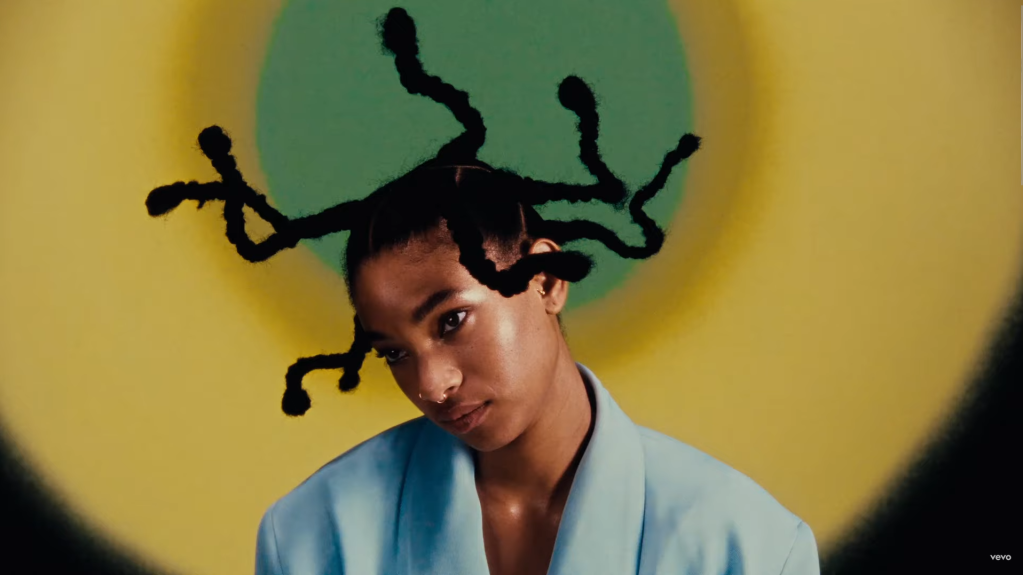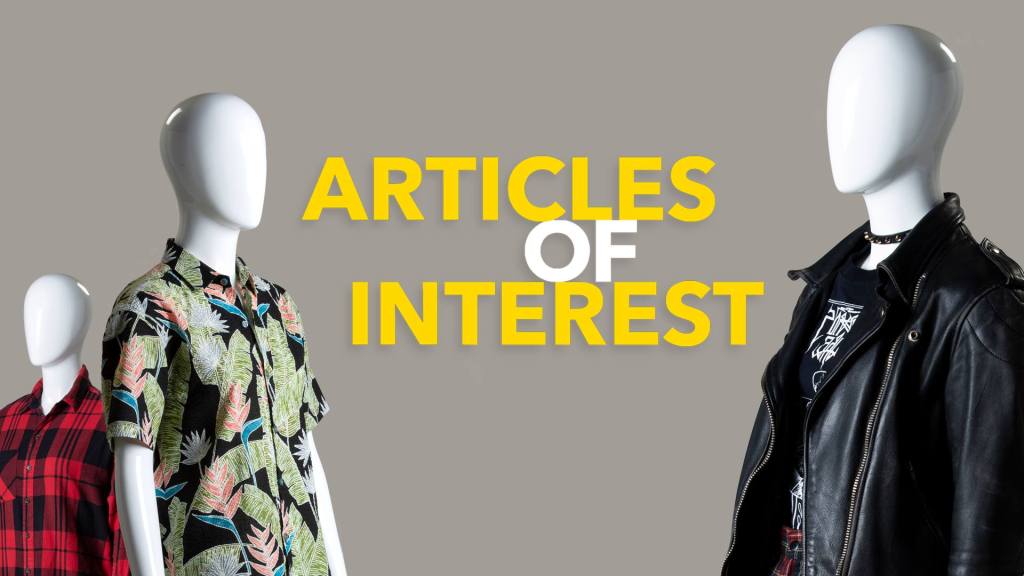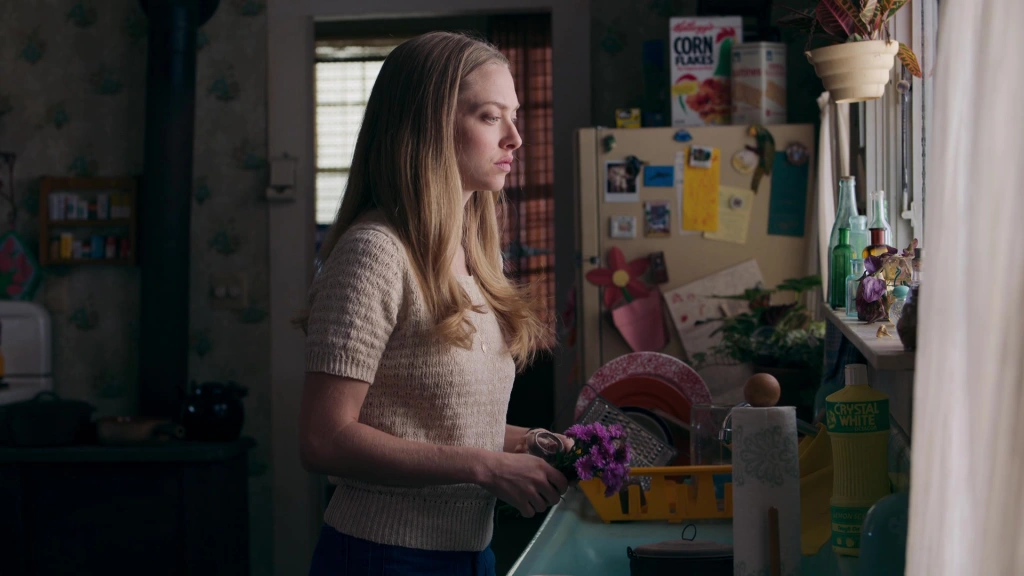7/4 to 4/4 and everything but the vibe is so different are you kidding me are you for real right now are you for real
Yesterday — YESTERDAY! — I published a piece on WILLOW’s new song, “Symptom of Life,” discussing how it feels like a breath of fresh air, something both unique and also deeply informed by a passion for composition and songwriting.
And then she just like — she literally did it again. Today, WILLOW dropped “b i g f e e l i n g s.” The visualizer video dropped and I was immediately sent the link many times. And I just, like . . . listen. Listen to it now.
Are you going to scream about time signatures again?
When I wrote about “Symptom of Life,” I focused on how much the song reminded me of Radiohead, but I had edited out some long passages on other favorite artists of that era: Tori Amos and Fiona Apple.
Fiona Apple’s 2020 Fetch the Boltcutters put Apple’s work back on the radar for many longtime fans as well as introducing the Mitski-pilled TikTok users to her oeuvre, many for the first time. Fetch the Boltcutters famously earned the elusive Pitchfork 10/10 rating, the first in several years. This was the impetus for The Ringer‘s history of Pitchfork 10s, as well as a discussion on Pitchfork itself about what ratings even really mean.
Tori Amos, meanwhile, has faded somewhat more into obscurity, but remains a tremendous inspiration to so many modern musicians. Jude Doyle of BuzzFeed, and later on author of Trainwreck: The Women We Love to Hate, Mock, Fear… and Why and contributor to It Came from the Closet: Queer Reflections on Horror, has a great explainer on Amos’s impact in his piece, “Where Would Music Be Without Tori Amos?”
I shouldn’t have been surprised: Everywhere you look, people are stepping into the territory that Amos carved out. That flaming grand piano bit Gaga did at the AMAs a few years back? That’s a Tori thing. (And so was trapping the piano in a transparent box.) Joanna Newsom records nine-minute free-form orchestral jams about convoluted personal mythology on an archaic classical instrument? Hey, I liked “Yes, Anastasia” too. St. Vincent’s coupling of intensely pretty vocals and lush orchestral landscapes with harsh guitar dissonance? See From the Choirgirl Hotel.
For the record, I didn’t know that the writer of this piece turned out to be the coolest person alive. Unexpected, and very fucking cool, rabbit hole.
Pitchfork, of course, is one of the many groundbreaking and beloved (and, of course, divisive and controversial) publications that has been sucked dry and turned into a wasteland by the fracking of corporate greed. This time, instead of just shuttering the publication, it was rolled into another Condè Nast publication, GQ. Why would Pitchfork, a publication about music, one that with this deliberate exaltation of Fiona Apple as a pissed off woman in music made purposeful strides towards gender equality in music journalism, be folded into Gentleman’s Quarterly? Great fucking question. I’m exhausted. This used to be my dream career, you know? Not Pitchfork, but journalism. Culture crit. Writing analysis and reviews. All of this. It used to be a job. I’m doing this for free anymore because I care. You know that, right?
You can support Jude Doyle on Ghost.
Oh, okay, no, just more unrelated rambling
Fiona Apple and Tori Amos both made names for themselves under similar scenarios: both are young women with exceptional talents for songwriting and playing the piano, and both had a “fuck you” attitude that the music industry did not really want to endorse. Both women sing with a certain directness and rage, and their piano stylings matched.
Tori Amos’s piano has always felt delicate and music box-y to me, even with its aggressive percussion and jarring, octave-leaping contrasts of high notes and low basses. There is a symphonic, cinematic undertone to Amos’s compositions.
Fiona Apple, meanwhile, is distinctly jazzy. While her 1999 album When the Pawn Hits the Conflicts He Thinks like a King What He Knows Throws the Blows When He Goes to the Fight and He’ll Win the Whole Thing ‘fore He Enters the Ring There’s No Body to Batter When Your Mind Is Your Might so When You Go Solo, You Hold Your Own Hand and Remember That Depth Is the Greatest of Heights and If You Know Where You Stand, Then You Know Where to Land and If You Fall It Won’t Matter, Cuz You’ll Know That You’re Right (or, as most people know it, When the Pawn . . . — yes, that is genuinely the full title; yes, it earned her a record for longest album title) shows off her jazz inspirations the most clearly, they still come through clearly on Fetch the Boltcutters.
“b i g f e e l i n g s” especially evokes the iconic piano in Apple’s “Shameika” for me:
But there’s also something in the mix that is evocative of Tori Amos’s theatricality, her agile piano melodies that feel in direct conversation with the song’s core melodies. The piano in “b i g f e e l i n g s” is jaunty. It sounds almost . . . rude? It sounds awkward and stumbling, of course — the chorus is literally, “I know I have / I know you have / problems.” The piano conveys that sentiment, but with a dripping seduction that revels in being a big fucking mess.
I can almost see Tori Amos banging away at her piano alongside WILLOW’s singing.

Like with my last piece, I can’t say for a fact that WILLOW was inspired by Amos and Apple — but “b i g f e e l i n g s” certainly evokes them for me.
And that is true not just in musicality, but in WILLOW’s confidence as well. Amos and Apple convey a confidence that is jagged and confrontational; as two women with difficult pasts and difficult careers breaking into the misogynistic music industry, I imagine they would have had no choice but to be confident in much of their music. Otherwise, it would have been easier to break them, and even they could be broken. That’s a great deal of the meaning in Fetch the Boltcutters, including its title and title track.
Not even a mention of the time signature?
But WILLOW’s confidence, as I said in my last piece, is different. It’s easy and it’s slick, even in the bombastic and frantic “b i g f e e l i n g s.” To be clear, WILLOW does not convey a sense of comfort and serenity in her music — just check her album titles:
- <COPINGMECHANISM>, 2022
- lately I feel EVERYTHING, 2021
- THE ANXIETY, 2020
- wait hold up that’s so many albums? hello?
- okay these ones don’t have titles that really help me make a point but I feel insane looking at how many releases she’s done in such a short amount of time?
- WILLOW, 2019
- The 1st, 2017
- ARDIPITHECUS, 2015
- what does that even meaaannnnn
- oh okay it’s like a common human ancestor primate
- ohhhhh it’s like from in animal crossing okay

Um! So like —
WILLOW’s confidence is not about the subject matter of her lyrics or anything regarding Willow Smith as a person, her demeanor, her presentation, or her expression. As always: I don’t know her. I don’t typically involve myself in the personal lives or personas of artists.
What I mean instead is the confidence of performance in her songs. WILLOW’s vocals are ambitious and direct. The chaos and energy come from the composition and instrumentals, but WILLOW’s vocal delivery is ambitious, emotive, and sweeping. WILLOW portrays a singer who knows they can really fucking sing, a singer who is so confident they don’t need to prove anything. If there is aggression or confrontation, it is pointed inwards, as indicated lyrically.
Oh and that contrasts with Amos and Apple by —
And, of course, there’s the time signatures.
Before I even pressed play on “b i g f e e l i n g s,” I had my hand up to start counting (YES I have to count out time signatures on my hand still). And she literally fucking did it again: this song has 7/4 verses with heavily syncopated 4/4 choruses, just like “Symptom of Life.”
But “b i g f e e l i n g s” uses these time signatures to a completely different effect. One easy point of comparison is that “Symptom of Life” feels more Amos while “b i g f e e l i n g s” feels more Apple. “Symptom of Life” feels like a rumination, where “b i g f e e l i n g s” is an explanation. “Symptom of Life” uses the 7/4 to wrap the listener into tides of philosophical and metaphysical questions, where “b i g f e e l i n g s” uses 7/4 to convey a scattered and intense inner life.
So, essentially: WILLOW used one of the coolest and most ambitious tricks in music, an odd time signature, twice — and with two completely different feels. I wouldn’t be shocked if most people who have listened to these two tracks don’t even pick up on their rhythmic similarities.
You don’t need to notice or understand in order to enjoy either song, and that’s a key factor in what makes them so enjoyable in the first place.
In normal times, I would be saying something like, “If this album doesn’t get a Pitchfork 10 when it drops, I’m bringing out my own pitchfork, and maybe some torches.”
But, well . . . here we are instead.







Leave a comment